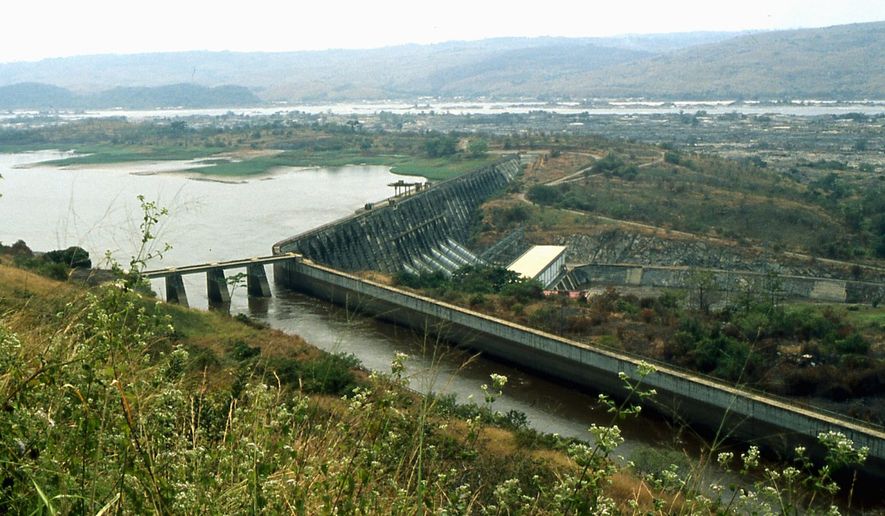The Democratic Republic of the Congo has tremendous hydropower potential. It has been estimated that it could produce 100,000 MW of electricity, enough to meet all the current needs of Africa.
This does not sound unreasonable when you consider that one single, multiphase project now on the drawing boards, which has been studied for several years, could deliver a total of some 50,000 MW.
The project is called Grand Inga. It builds on an earlier project that saw, in the 1970s, the construction of two dams on the Congo River at a point called the Inga Falls.
The earlier plants are now aging, with lost efficiency, but were built to produce a total of 1,775 MW (Inga I producing 351 MW and Inga II producing 1,424 MW).
Grand Inga envisions a massive expansion of hydroelectric generating capacity, reaching a total output of close to 50,000 MW, with transmission lines carrying electricity as far as South Africa.
The new scheme includes construction in seven stages of two new dams at Inga Falls: Inga III and Grand Inga. (See map)
The first stage is construction of Inga III, the third dam at this point on the Congo, which is projected to cost $12 billion.
Inga III will produce 4,800 MW, of which 2,500 MW will be purchased by South Africa, and 1,300 MW will be sold to mining companies, primarily in Katanga Province. Currently the extraction industry is facing an estimated shortfall of some 450 MW, and growth in the sector will only increase demand.
The remaining 1,000 MW will be sold to the national utility SNEL, which in turn will sell it to households and small businesses in greater Kinshasa. It is estimated that the capital city will need this additional supply to meet its needs by 2025.
In May 2013, South Africa and the DRC entered into a treaty whereby the two countries agreed to build Inga III jointly. The DRC ratified the treaty in 2014.
Like many countries in Africa, South Africa has recently experienced chronic power shortages, and Inga III is seen by Pretoria as one of the best options for addressing this serious domestic shortage.
The lead contractor for Inga III is to be chosen this August. The two groups contending for the first phase are China Three Gorges Corp. in partnership with Sinohydro Corp., and Madrid-based Actividades de Construccion y Servicios SA with Spain’s Eurofinsa SA.
The third bidder, Posco and Daewoo Corp. of South Korea, in partnership with Canada’s SNC-Lavalin Group Inc., withdrew its interest in March.
Once Inga III is complete, the DRC will turn to building the Grand Inga Dam itself.
This dam will be 673 feet wide and create a reservoir that will be 10 miles long. It will be the largest hydropower project in the world, generating twice the output of China’s Three Gorges Dam. This will mean that Inga hydro plants will produce more than a third of all the power generated in Africa.
The Grand Inga project (including Inga III) is estimated to cost $80 billion to $100 billion. Among interested parties to lead in funding the project are the World Bank, the African Development Bank and the European Investment Bank.
On March 14, 2014, the executive directors of the World Bank Group approved a $73.1 million grant to the DRC for the Grand Inga project (including Inga III). This came after the African Development Bank granted the DRC $33.4 million the year before.
These funds are earmarked for feasibility and environmental impact studies, as well as for training of personnel and the creation of an administrative body to manage Inga III.
The World Bank’s plan is to help the DRC finance the project with a combination of private and public funding in a Private-Public Partnership (PPP).
In March 2015, the World Bank announced that work on Inga III would not begin until 2017. The DRC’s agreement with South Africa includes provision of power from Inga III by 2020, a date that is looking difficult to make and is putting pressure on Kinshasa to get the construction moving.
The Grand Inga project enjoys strong political support across much of Africa. Among leading advocates are NEPAD (the New Partnership for Africa’s Development), SADC (the Southern African Development Community) and EAPP (the East African Power Pool).
The new Inga dams will help alleviate shortages of electricity in the industrial sector, but the broader national needs for electricity by Congo’s economy will require a great deal more generating capacity than Inga III.
Currently only 9 percent of the population has electricity, and with anticipated expansion of the economy, both personal and commercial consumption will rise significantly.
And since hydropower is perhaps the most ecologically friendly and best suited to Congo (and Africa as a whole) with its many large rivers, more hydroelectric schemes can be expected in future.




Please read our comment policy before commenting.